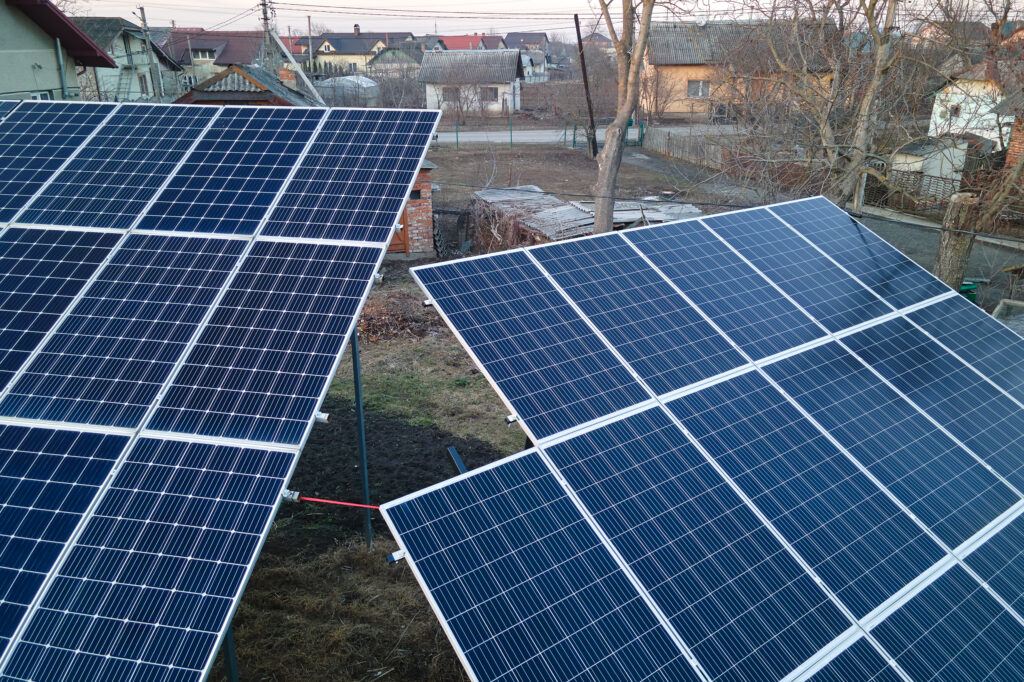Solar Power 101
What is solar power, and how did the industry get started?
Solar power is a clean, renewable energy source that has become increasingly popular due to its financial, resiliency, and environmental benefits. But how does solar power actually work, how did the industry get its start, and what makes it such a strong option for the future?

How Solar Power Works
Solar panels are typically installed on rooftops or in open spaces with plenty of sunlight. When sunlight hits the panels, it generates direct current (DC) electricity. This DC power is then converted into alternating current (AC) electricity by an inverter, which is used to power your home. If a household solar system produces more electricity than is needed, the extra energy can be stored in batteries for your home to use later (once the sun goes down) or can be sent back to the grid. Depending on the state’s regulatory rules, energy sent back to the grid can directly benefit the household with additional utility bill savings through net metering.
Benefits of Solar Power
Solar power provides many benefits. It helps reduce electricity bills by enabling homeowners to generate their own energy, saving households money by reducing overall electricity costs. With the help of incentives, rebates, and falling equipment prices, solar is more affordable than ever. Solar power also provides homeowners with a form of energy independence, protecting them from ever-rising utility rates. Finally, solar, when paired with a home battery system, can provide household resiliency in case of power outages—households can power critical appliances like refrigerators or medical devices.
The History of the Solar Industry
Solar power is an American success story. The modern solar industry began in 1954 when scientists Daryl Chapin, Calvin Fuller, and Gerald Pearson at the now-famous Bell Labs developed the first silicon photovoltaic (PV) cell, capable of converting sunlight into power to run everyday equipment. Since then, many technological improvements have made solar energy much more efficient and affordable and it is now common around the world
In the 1970s, the U.S. Department of Energy began taking solar seriously, launching the Solar Energy Research Institute (now the National Renewable Energy Laboratory). The industry gained significant momentum in 2005 when the Energy Policy Act of 2005 created the Investment Tax Credit (ITC), offering a 30% federal tax credit for solar projects. This move sparked private investment and helped dramatically scale and commercialize solar technology.
Since then, the solar industry has grown rapidly, expanding by more than 200 times since the ITC was established. By 2024, solar energy became the dominant source of new electricity in the U.S., accounting for 81.5% of new energy added to the grid.
How Solar Has Improved
Solar technology has made significant strides. Modern panels are much more efficient and compact, generating more power with less space. The cost of solar has dropped dramatically, making it a more affordable option for many. In addition, energy storage technology has advanced, allowing homeowners to store excess energy for later use, making solar more reliable and consistent. As solar continues to improve, it’s becoming an even smarter financial and more sustainable choice for both residential and commercial use.
Links and Sources
If you’d like to learn even more about solar power and the industry, please visit the following resources:
- Department of Energy: “History of Solar”
- EIA: “Solar Explained”
- SEIA: “Solar Investment Tax Credit (ITC)”
- National Renewable Energy Laboratory: PV Cell Efficiency Interactive Chart
- Solar Power World / Federal Regulatory Energy Commission: “Solar accounts for 81.5% of new electricity sources added to US grid in 2024” (Data from this report)
